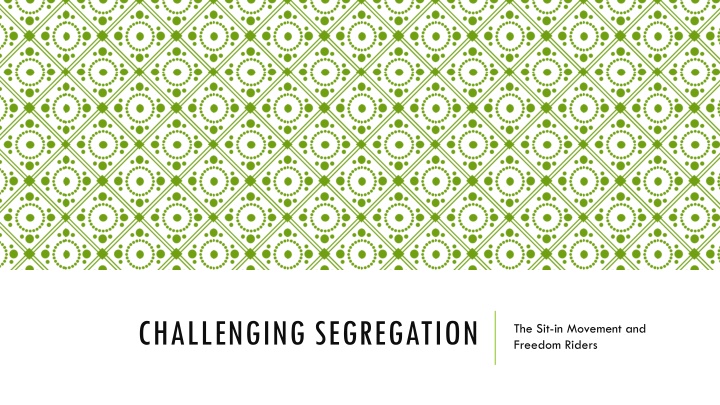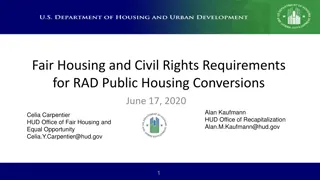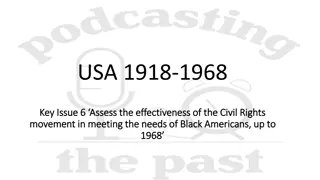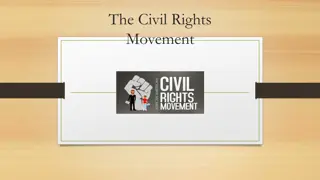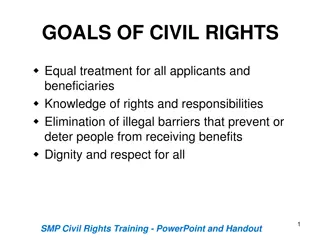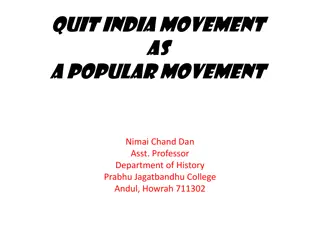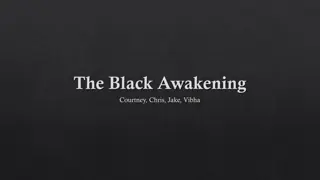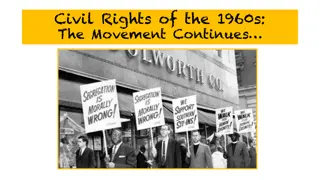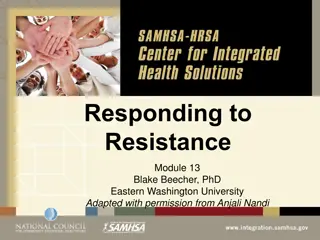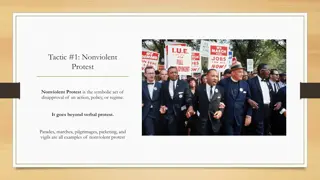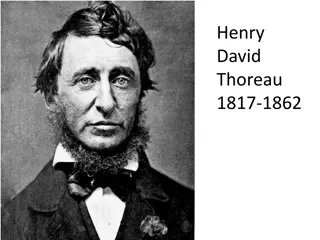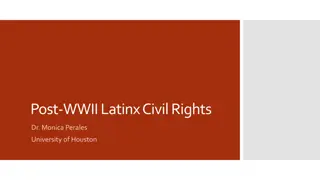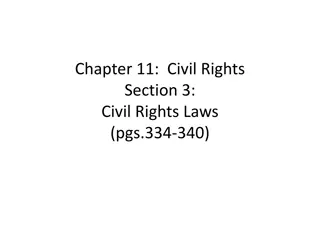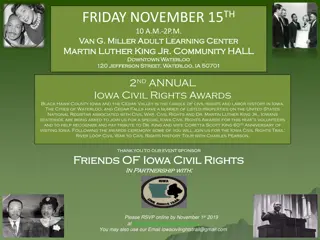Nonviolent Resistance in the Civil Rights Movement
The Civil Rights Movement utilized nonviolent resistance methods such as sit-ins, bus boycotts, and protests to challenge segregation and fight for equality. Iconic figures like Rosa Parks and Martin Luther King Jr. played significant roles in inspiring change through peaceful means. The movement's history is rich with stories of courage, determination, and the enduring fight for social justice.
Download Presentation

Please find below an Image/Link to download the presentation.
The content on the website is provided AS IS for your information and personal use only. It may not be sold, licensed, or shared on other websites without obtaining consent from the author.If you encounter any issues during the download, it is possible that the publisher has removed the file from their server.
You are allowed to download the files provided on this website for personal or commercial use, subject to the condition that they are used lawfully. All files are the property of their respective owners.
The content on the website is provided AS IS for your information and personal use only. It may not be sold, licensed, or shared on other websites without obtaining consent from the author.
E N D
Presentation Transcript
CHALLENGING SEGREGATION The Sit-in Movement and Freedom Riders
STANDARD AND OBJECTIVE Students will analyze the effectiveness of nonviolent resistance in the Civil Rights Movement by examining primary source interviews. SSHS-S1C9-03-c Strand 1: American History Concept 9: Postwar United States PO 3: Describe aspects of post World War II American society c. protest movements
BEFORE ROSA PARKS Claudette Colvin stood up to segregation on the bus before Rosa Parks She was only 15 and refused to give up her seat She said: It's my constitutional right to sit here as much as that lady. I paid my fare, it's my constitutional right." Colvin felt compelled to stand her ground. "I felt like Sojourner Truth was pushing down on one shoulder and Harriet Tubman was pushing down on the other saying, 'Sit down girl!' I was glued to my seat. The NAACP considered using Claudette s case to fight the segregation but she became pregnant and they didn t want an unwed mother as their figurehead
ROSA PARKS On buses during the 1950s the front seats were reserved for whites and the back for blacks Rosa Parks was told by the bus driver to give up her seat for a white man When she refused the police were called and she was arrested This sparked the Montgomery Bus Boycott They formed the Montgomery Improvement Association and Martin Luther King Jr. was elected to lead them
NONVIOLENT RESISTANCE This is a method of protest that has a very long history Mahatma Gandhi is famous for using NVR to oppose British Colonialism It is the achieved through peaceful protests and civil disobedience Martin Luther King Jr. and other leaders of the Civil Rights Movement encouraged change through NVR Protesters had to be trained in Nonviolent resistance because it is very hard to achieve You have to be completely stoney faced- you can t smile, laugh, cringe, cry, or make any noise
SIT-INS Lunch counters were small restaurants sometimes in department stores similar to diners People of color were allowed to order food to go but they were not allowed to sit and eat at the counter As a sign of protest four students, Joseph McNeil, Ezell Blair Jr., David Richmond, and Franklin McCain sat at the counter and refused to leave This led to more and larger sit- ins
